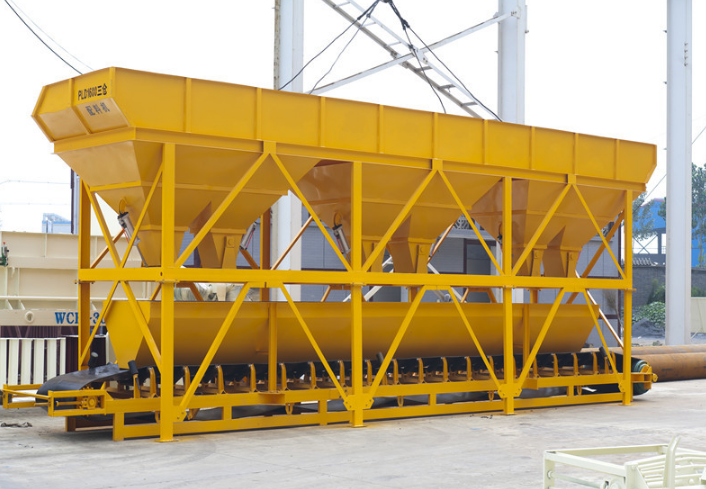What is the Aggregate Batching Plant
The aggregate batching machine is mainly used for the quantitative distribution of the aggregates. It is also called as the aggregate batcher, automatic sand batching plant, and widely used in concrete industry. It can replace the manual bench scale and volumetric batch plant.
Types of Aggregate Batching Plants
1. Based on Aggregate Types:
Two Hoppers, Three Hoppers, and Four Hoppers: These classifications refer to the number of hoppers or storage bins used for different types of aggregates (like sand, gravel, crushed stone) before mixing. Two-, three-, or four-hopper plants allow for the storage and controlled dispensing of multiple aggregate materials, providing flexibility in concrete mix designs.
2. According to Measurement Method:
Cumulative Measurement: In this method, all components (aggregates, cement, water, etc.) are measured together before mixing. It involves adding up the quantities of each material to form the total batch, simplifying the process but potentially leading to slight variations in mixture ratios.
Separate Measurement: This method measures each component separately before mixing, ensuring precise control over the proportions of aggregates, cement, and other materials. It enables accurate batching and better consistency in concrete quality.
3. According to Operational Mode:
Belt Type Batching Plant: This type uses conveyor belts to transfer aggregates from the hoppers to the mixing unit. It offers high efficiency in material handling and is suitable for large-scale operations due to its continuous batching process.
Air Cylinder Batching Plant: Also known as pneumatic batching plants, these operate using air cylinders to control the discharge of aggregates into the mixing unit. They are known for their accuracy in measurement and are suitable for smaller-scale operations.
Components of Batching Machine
The aggregate batching machine comprises three main components: the feeding system, weighing system, and electrical control system.
The feeding system includes the storage hopper and feeding machine, which are responsible for storing aggregates and transferring them to the weighing hopper under the control system's guidance.
The weighing system, a pivotal element of the batching plant, consists of the hopper, suspension system, sensor, and batching controller.
Meanwhile, the electrical control system, serving as the heart of the batching plant, manages the weighing, display, operation, and automatic proportioning. It consists of the batching controller and a robust circuitry setup.
The Working Principal of the Aggregate Batching Plant
The aggregates including sand and stone will be feed into the each storage hopper by the loader. But if the batching plant is installed under the ground, it also can be loaded by manual. Inputting the recipe to the weighing controller in accordance with the instructions of the requirements. After pressing the batching button, the batching machine will begin the automatic batching program.
The operational mechanism of an Aggregate Batching Plant involves the systematic handling of constituent materials like sand and stone, typically through these outlined steps:
1. Aggregate Loading: Aggregates, comprising sand and stone, are introduced into individual storage hoppers by a loader. In scenarios where the batching plant is situated below ground level, manual loading methods are employed to fill these storage units.
2. Recipe Input: Specific mixture requirements are inputted into the weighing controller of the batching plant. This involves entering precise instructions detailing the quantities of each aggregate necessary to achieve the desired composition.
3. Initiation of Batching Process: Upon confirmation of the input recipe, the operator triggers the batching process by activating the batching button on the control panel. This action sets in motion the automatic batching program embedded within the batching machine.
4. Automated Batching: The batching machine meticulously executes a pre-programmed sequence, blending aggregates sourced from their respective storage hoppers in the specified proportions as directed by the input recipe. This ensures a consistent and accurate mixture formation.
5. Output Handling: Upon completion of the batching cycle, the final mixture is discharged to a designated area, ready for subsequent processing or immediate use in construction activities.


评论
发表评论